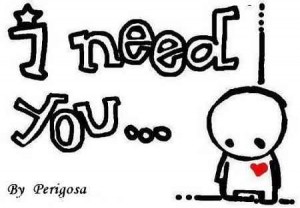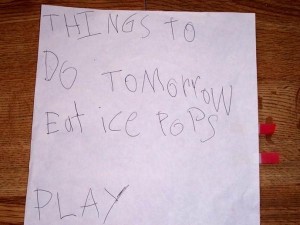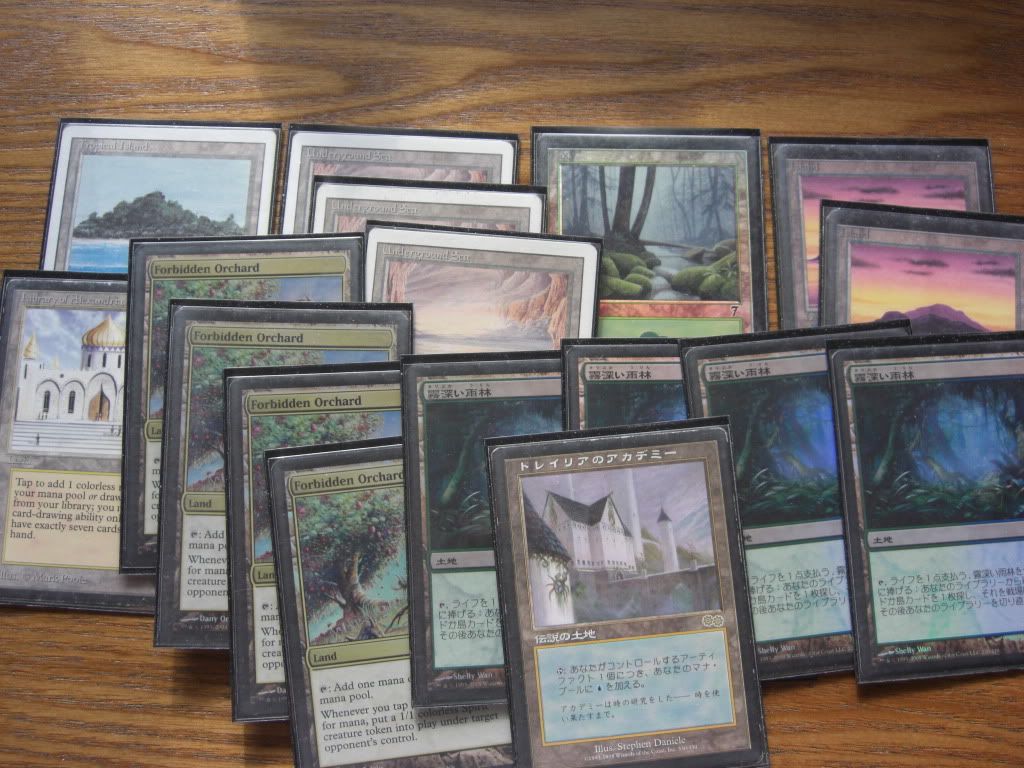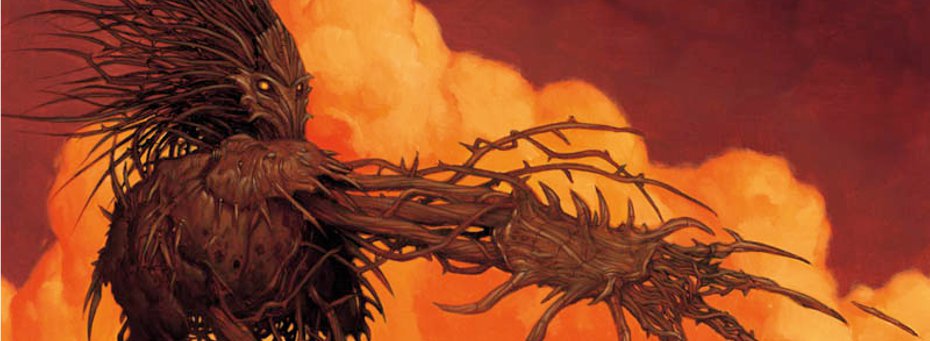Are you a Quiet Speculation member?
If not, now is a perfect time to join up! Our powerful tools, breaking-news analysis, and exclusive Discord channel will make sure you stay up to date and ahead of the curve.
If you remember from my last article, dear readers (Insider: The Booming Business of Ratios, Part 1 – Why Force of Will is Simply Worse Than You Think), we were discussing the concept of convenience and how it relates to value. The less something's worth, the less you care about it, and the more likely you are to get it at a discount. I argued that you should trade for low value cards to get better deals and avoid money cards like Force of Will because everyone knows how much it's worth and are less likely to willingly trade it at a loss.
If you haven't already, I would recommend at least skimming the previous article so the totally out of context examples I'm making are at least a little less nonsensical.
The Force/Paladin Conundrum
Continuing with this list of hypothetical situations, a person trading a Force cares more about the price than a person trading a pile of Paladin equivalents. They’re more willing to demand a specific price and grip tightly to their playset until they find a person who’s willing to meet their price.
The more expensive the card, the more work a person is willing to do to trade for or away at the right price - would you dump your Power 9 piece for 10% less than its value? If you said yes, please feel free to contact me. I want your entire collection.
If trading is a convenience, as long as the convenience isn’t outweighed by the value lost in completing the transaction, then a person is generally willing to complete the trade. Yes, you value your Thoughtseize at 45, but it’s Modern season and I need 4. This is quicker and overall cheaper than buying them, so I’ll make the trade.

Compare that to this: it’s NOT Modern season, I don’t need Thoughtseizes and you’re valuing at 50. Why the hell would I trade for them? It’s convenient to use your Standard stock as tradebait for cards you need because you value them at barely more than the cardstock they’re printed on (no matter if you say 6 or not during the trade, it’s not likely that you look at Silverblade Paladin and think ‘wow! This is better than a 5 dollar bill!’)
Black lotus? Son, that transcends cardboard so hard it can’t even be considered in the same level of reality as Paladin.
The Methods
Unfortunately, this cuts both ways. If you have a cunning collection of 5 dollar cards that you’ve been suavely picking up for massive chunks under their actual value, good on you, but how are you going to convince the Standard-under-valuer (every store’s got one)? He/she insists that the card on his/her end of the table is worth something, and even if it's wrong, won't listen because you won't budge, trying to maintain your bottom line.
Because I trade in such a small pool of people on a daily basis, and because maintaining an honest and positive impression on the people I interact with is important to me, I have to somehow deal with this problem without simply bullying or bruteforcing the trade into occurring. I know I can convince the guy that the trade is fine, but what if I see him three times a week in History 282 and I literally live down the hall? Why would I want to risk that relationship? As such, it's important to look at the list below, and remember something very crucial: You don't need to make value on every trade. I'll repeat that. You don't need to make value on every trade. For it to be a profit you have to make more money than you lose money, and being willing to make a trade that doesn't give you anything but the opportunity to help a friend goes a long way.
The Process, Listified

In any case, here are the steps of my process to pay for my monthly allotment of food:
- Start with cards.
- Turn them into more cards of similar quality by abusing my superior knowledge of the price dynamics of Magic.
- Once I have plenty, diversify a little into slightly better and slightly worse cards.
- Once I have diversity, trade for undervalued gems.
- Sell gems.
- Take a portion of proceeds, buy a totally badass card with very little competition in the area.
- Trade at my own price for cards.
- Repeat.
Let’s start with the first step I haven’t explained yet, step 3.
If everything in your binder is worth 5 dollars, how do you expect to trade for the Stromkirk Noble that your trading buddy values at 2? Obviously you need to get it, but you need smaller schlock to do so. Similarly, if a guy has a random Exploration he calls 13, offering 3 Paladins is going to set off some alarm bells. Having bigger cards to match up with the higher priced stock is also important.
Step 4 should make sense, since I previously stated my love of Death Baron and his ilk in the first couple paragraphs of the first part of article. If you didn't read those sentences, here's what I think about him: since he’s traditionally undervalued (by a lot), you can compound the value you made off your crap card ratios by trading into him, although he's becoming more well known.
However, I see the following mistake a lot - keeping Death Baron in your binder and valuing him at what he’s worth. If he’s undervalued the world around, why would someone want to trade for him? Derp. Remember that.
At some point, your pile of Sanguine Bonds, Elvish Pipers and Death Barons (you obviously don't need to trade for those three exactly, they're just examples of cards that you can get for cheap and then will be unable to trade effectively. Substitute your favorites- you'll find some, I assure you) will have pretty much locked up a significant percentage of your card value in cards that nobody wants for the right price. Therefore, step 5.
Step 5, or What You Do Next
Sell ‘em all. I don’t care if you think that selling your 10 dollar retail death baron for 4 dollars is dumb, if you got him for a Silverblade Paladin, who cares? Paladin is probably not worth 4 buy. In addition, it doesn’t matter if you aren’t in this business for cash. Whether you are or aren’t, step 6 is an excellent approach: Buy a card or 2 that you can name your price on.

What’s the value of a foil Japanese Marsh Flats? I’ll bet that 95% of traders can’t name a solid value without getting lucky on your shot-in-the-dark guess. Interestingly, I got offered 80 dollars in cash for each one I had from a dealer at GP: Minneapolis a few weekends ago, and they’re selling on StarcCty for 90.
One closed on eBay for 100, another pair for 60 each- If the dealer was off by that much, how likely is it that the EDH guy who wants ‘ALL THE PIMP IN THE WORLD’ either A: Has one, or B: Knows/cares how much it costs, exactly? '
Unlike Force of Will, which closes in enormous quantity on eBay every single day, ridiculous cards like this have very loose values available for interpretation and manipulation.
As a less extreme example, say you trade in for a NM foil Sensei’s Divining Top. How likely is it, do you think, that you could explain to a rabidly interested individual that you’re uncomfortable trading it for Standard stuff unless you got a significant chunk of value in the exchange? That's not a trick question, the answer is 'very'.
In my case I’m just trying to bring my quantity of high-movement cards up significantly, so I’m willing to dump that top immediately after ‘buying’ it to reset my binder. After having traded myself into a corner with death baron and his ilk, suddenly I can be back in business with the cards that are now the new FOTM (Flavor of the Month), and happily trade myself into stagnation once again.
A Complicated Example. Read Twice.
You will almost invariably make money off this if you know your values, since you’ve been trading for undervalued cards the whole time. As a rough example, if you trade your 100 dollar binder into a 200 dollar binder (not unreasonable in the slightest) over the course of a month or two, you could easily take 100 dollars of that that isn’t trading anymore and sell it for a foil Sensei's Divining Top.
The cards that were trading well you keep, and the Elvish Piper-esque schlock you turn into a fabulous foil. What you do from there is personal preference, whether you trade it into a massive pile of Paladin equivalents or simply set it aside for your collection.

- A picture of the Punny joke I'm about to make
While this doesn’t seem like much, especially compared to the 100% increase your binder made previously, this step is one I’ve found to be crucial.
Having a binder full of undervalued cards is a quick and easy way to build up the total value of your collection, but your options are limited. Even if you made no money whatsoever on the resell, even if you LOST money, you’d still be fine.
People are afraid to sell to dealers because they 'lose value', but what if that perceived value is pure profit you can't trade anymore? Why wouldn't you sell? Sell two Death Barons, buy lunch. Sell ten, buy a Flooded Strand. That 40 dollar card is going to do so much more than your 2.5 playsets of Barons ever would, despite the massive difference in retail prices.
Step 8
Repeat, Ad Nauseum.
~
Hopefully you enjoyed this, or at least it was helpful in your quest for greater value. If you have questions, comments or snide remarks, I eagerly look forward to reading them in the comments section.





You've got a creative writing style I find enjoyable and entertaining. Keep it up 🙂
On the finance front, I think I kind of do what you are suggesting to some extent. When I sell cards to buylists, I only sell cards that are either a) priced profitably or b) I can't really move in trades. When someone is buying Donates (as a recent example) for $2.50 I am more than happy ridding of my copies, which have sat in my binder for 3 years with no attention. Any time a retailer offers me real cash for cards I know I can't trade I jump on it.
I'm glad to hear you're enjoying it, hopefully I will continue to entertain.
I agree- Sometimes it's ok to not sell a huge pile of stuff, as long as you're selling things you can't trade. They aren't doing you any good in your binder, they might as well buy you a pretzel.
Yup, we're operating out of the same playbook here. Nice work.
Thank you, I appreciate that.
Hi Tucker, it was a great read!
Do you agree that there are 2 kinds of trades if you start out from the bottom; 1) Is the Gem-trade where you trade Arcane Melee's for Sanguine Bond/Elvish Piper so you can sell it right away to vendors. This mostly implies that the Sanguine Bonds are not high moving in trades (you call them undervalued which is also a term you can use for this)
The 2nd kind of trades is trading Arcane Melee's for high moving cards of which you can move again like Resoration Angel/Terminus, here you can uptrade again for out-of-season cards (modern) or eternal staples. So in the end you can trade yourself into Step 6 basically
I realize I have these Elvish Pipers, Sanguine bonds in my binder because I could buy it pretty cheap and thanks to your article I think of moving them out and either grab the cash or invest into under-appreciated standard cards that are easy to move ( It was Restoration Angel before they spiked up to $8, think it is Terminus now )
I would agree that those are two very important examples of trades, though I'd also say that there are more types than that. It looks like you're assuming you'll be able to trade up every time, which isn't necessarily the case. As for re-investing the unmovable capital, I'd advise against cards like terminus and restoration angel. In many cases the buy/sell ratio on those cards is mediocre at best, so you aren't actually getting the best return for your money- in addition, because they're undervalued, it's very likely that people will undervalue them. There's no point in buying a card full cash value and then trading it at or below market price.
I'd recommend you instead invest in bigger, more stable, more well priced cards (like snapcaster mage, since you seem to do a lot of work with low to mid end cards, and snapcaster is a good low end example of the principle). Snap has good return, and you'd be surprised how many people think it's still above 20 retail. I hope that makes sense, I prefer to buy into high end product and then break it up from there than go straight for the large quantity small value product. While the buy/sell ratio doesn't matter so much when you're trading, when you're spending actual cash it's hard to justify losing up to 30% of face value, and I can almost guarantee a snap will make you more money than 2 restoration angels.
PS: Thanks for reading, I'm glad you took something from it! I wish you the best of luck with your trading endeavours.
Hi
Did I wrote in my first post that you assumed that I re-invest my capital (cash?) into cards like Terminus / Restoration angel? I feel they are underpriced among casual crowds when they need Card X,Y,Z for their deck. But the people where you can uptrade those are aware of their price.
I disregard vendors because as you say 'the ratio' is pretty low to sell those cards for cash tho some vendors have Angels at $5 while others have it at 12$, if they run buylists this might get favourable but I just avoid them atm
I mostly use these cards to trade it up for Snapcasters or stable/well priced cards which you can either make the profit from or use them to trade for eternal staples.
I only use my cash capital for investing to fill up my binder by delving through the LGS bulk rare which you can find gems OR by preordering cards for speculation. Do you also buy cards when they already have a pricefloor? Thanks !
This part is where I took that implication from:
"Either grab the cash or invest into under-appreciated standard cards that are easy to move ( It was Restoration Angel before they spiked up to $8, think it is Terminus now ) "
I sometimes invest to fill up my binder, but being profitable in every other area makes it very legitimate to just up and buy a playset of cards I need: More than once I've realized I need something expensive, like a playset of polluted delta, and been able to cover it with profits. As for pre ordering, I don't do it. It's just not worth it for me, and I don't like the extreme risk and high likelihood of low payout.
Pleas take this article down! This is the best explanation of what we do and I just would hate for anyone to read it! Way to let the cat out of the bag!
Thank you very much, that's high praise indeed. I appreciate the support.
Keep up the good work, in the future could you expand on the most efficient ways you've found to keep up with both trade values and buy list values? Also, what tips do you have for those of us who don't have access to good local dealers (none in town pay cash and they all undervalue trade-ins towards their stock.)?
Ah yes, the small town problem. I'm definitely looking forward to writing an article about the problems involved in trading in areas where you don't have easy access to a dealer, but what it comes down to is save them up in a box. Like Amistod wrote below me, when I trade at my school (max fnm size about 15) there are only so many cards I can trade. I hoard the ones I plan to sell, and trade for them much less than I usually would. Instead of targeting them specifically I trade for them as incidentals, since I know I have many months before I'll need to pick all the binders clean of death barons. As such I can maintain momentum, using most of my product to trade for other, more desired cards, while still picking up the death baron equivalents at a rate that will get me significant quantity to sell by the time I get to a GP or PTQ. My local store buys at 25% retail value cash, and 40% retail in credit. No way I sell to them.
As for remembering prices, when I feel like I'm losing my grip on prices, and I start making mistakes, I write down every trade, with the values and the way they were valued (cardkingdom, magiccards.info, scg, etc) next to them. When I get home, I check those prices (easier than checking everything in standard), and circle in red the values I got wrong. I keep a running list of the cards I tend to miss by more than 50 cents, so before I trade I check all the circled values from the last 2 weeks, 3 weeks, 1 month, 2 months, whatever, depending on how much I've been trading. More trading means more recent checking. Does that help at all? I hope it does.
Joe – I like to check in with my friends at card kingdom, adventures on… and i think troll and toad just announced a buylist cart.
Nothing like mailing in 100 buylist cards all worth 2-3$ ea.
Joe – Also check out the gatheringmagic.com article about 'ogreing' your sell box.. if you divided up a 1k and filled it up through out the year, you could bring it to the one GP near you each year. That's the thing about these death barons.. they never change.